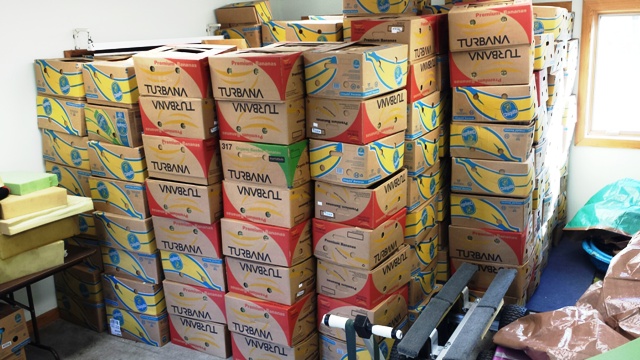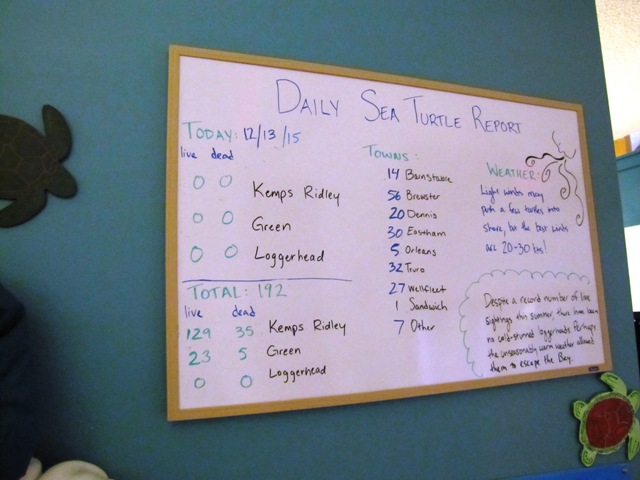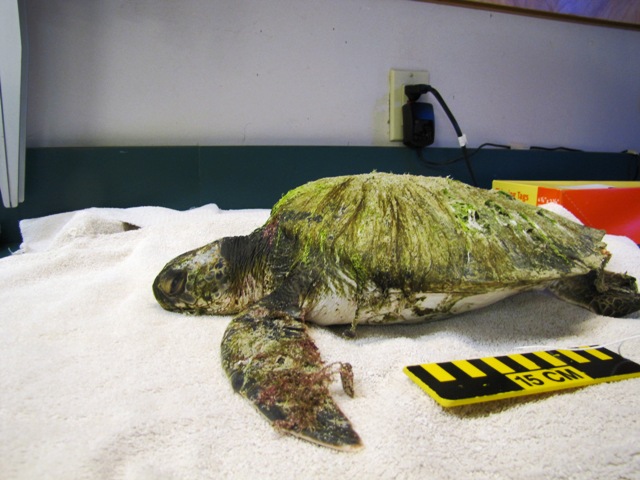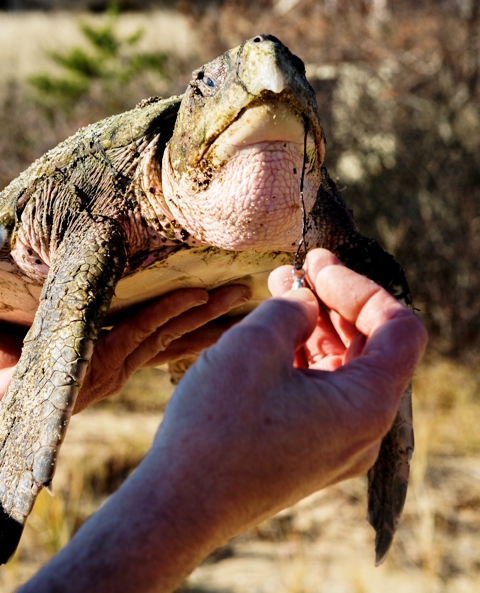The 2015 stranding season began at, well, a turtle’s pace especially compared to last year’s wildly busy season. Through the month of November, when normally we have waves of turtles coming in, our stacks of donated banana boxes were growing and the calls about strandings were few.

Banana boxes piling up. These are used to transport turtles to the aquarium and other rehab facilities. (photo by Leah Desrochers)
But as of this post, we have retrieved more than 190 turtles—which may seem like small potatoes compared to the more than 1200 that came in last fall— but it’s right in line with our more typical years.
This season is not without its curiosities and other points of interest. For one thing, we recovered a very big Kemp’s ridley!

Volunteer driver Judy Bullard with Big Ridley
These turtles are actually the smallest sea turtles in the world. Usually, we only see them when they’re youngsters, at two or three years old and weighing only 4-6 pounds. But this turtle that washed in at Fisher Beach in Truro weighed 40 pounds! We’re trying to find out whether the animal may actually be a hybrid of a ridley and a loggerhead ( a bigger species).

Our daily turtle count in the sanctuary’s exhibit hall
Speaking of loggerheads, we haven’t had one so far. These big turtles usually come in toward the end of the stranding period due to their larger size. But it’s odd that not one has been reported, as of this post.
We’ve had more green turtles than usual—15% of the total so far, about triple our usual share. Green turtles are generally less tolerant of cool water because they have a more tropical range than the Kemp’s ridley’s, our most common stranding turtle. Even the smallest greens have been found alive. This was the first green turtle of the season.

This green turtle may have been floating around the bottom of the bay given all the algae on it.
Green turtles get their name not from the algae you see here but because of the greenish color of their fat which is believed to come from the adults’ vegetarian diet.
On a less happy note, this ridley was found with a fishing hook in its mouth or throat, a reminder of how treacherous the environment has become for marine animals because of fishing gear, plastics and other debris in the ocean. Unfortunately, this turtle did not survive surgery.

Kemp’s ridley that swallowed a fish hook.
The relatively mild fall weather and bay temperatures are the likely cause of the slow stranding season and these factors may also have helped keep some of these chilly turtles warm enough to survive deeper into the year. We’ll keep you posted!

